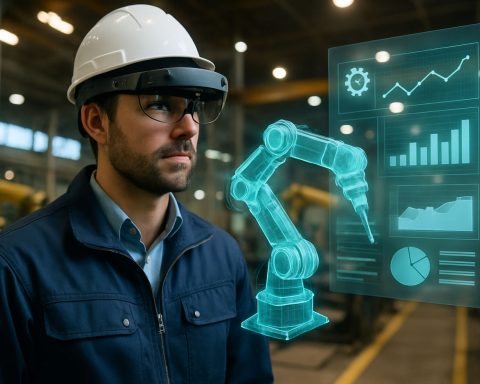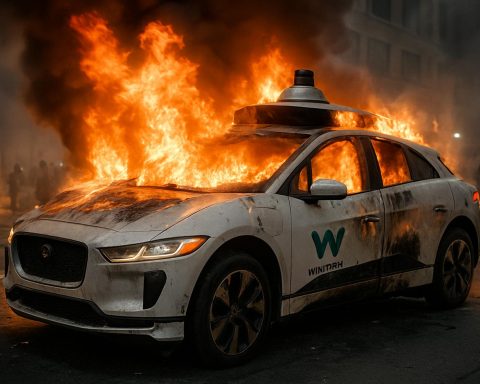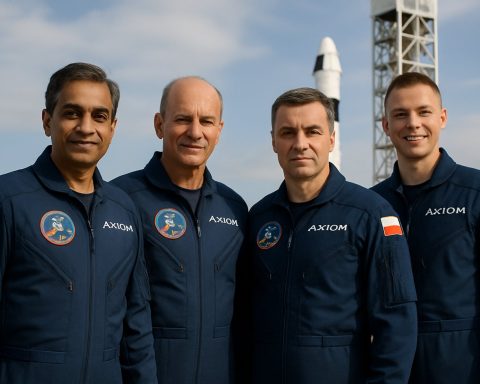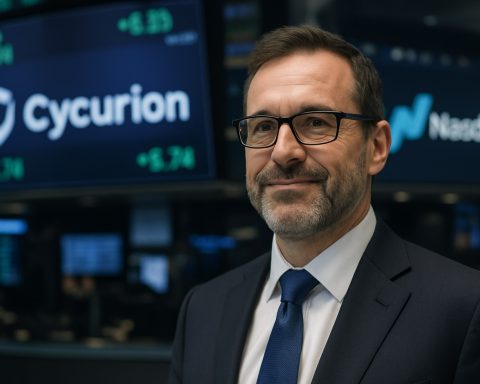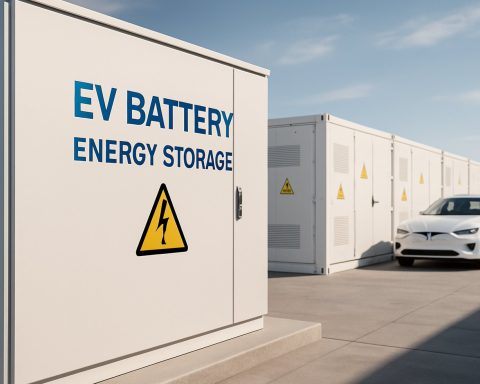- A 19-year-old college student, Owen McIntire, allegedly set fire to two Tesla Cybertrucks at a Kansas City dealership using a Molotov cocktail.
- McIntire faces serious charges, including the use of an unregistered destructive device and malicious arson, potentially leading to decades in prison.
- The incident has been framed as an act of domestic terrorism, highlighting rising aggression against Tesla, perceived as a symbol of political and cultural expression.
- The Department of Justice is taking a firm stance on Tesla-related arson, with swift prosecutions becoming part of a broader strategy.
- For McIntire, the progression from alleged arson to legal action underscores the severity of such acts and their consequences.
- This case underscores the intertwining of technology and political sentiment, as actions against Tesla vehicles reflect broader societal tensions.
On a brisk night in March, flickering shadows danced across the asphalt of a Tesla dealership in Kansas City, where two futuristic Cybertrucks stood engulfed in flames. These colossal eruptions of fire, ignited allegedly by 19-year-old Owen McIntire, emitted plumes of black smoke that clawed at the night sky. In a swift sequence of events, McIntire, a college student from the University of Massachusetts in Boston, transformed from a promising scholar to the protagonist of a sensational criminal saga.
Charged with the use of an unregistered destructive device and malicious arson, McIntire now faces the grim possibility of spending decades confined within cold concrete walls. The Department of Justice has made its stance crystal clear: acts of arson and vandalism targeting Tesla properties will be met with swift justice. Attorney General Pam Bondi has declared an uncompromising war on these incendiary offenses.
What fueled McIntire’s fiery vendetta against Tesla, specifically those iconically sleek Cybertrucks? Prosecutors claim it was a Molotov cocktail that orchestrated the blaze, misjudged as a tool of fleeting rebellion but now the cornerstone of a haunting federal indictment. A burnt rag, remnants of the cocktail’s making, lay abandoned beside the charred vehicles, marking the precipice where rash impulse crossed into irrevocable lawlessness.
Witnesses that night recall a figure shrouded in dark, flowing clothing, a stark white hat perched atop—a distinct silhouette blending into the chaos yet unmistakably etched in their memories. Social media chronicled the moment, with a witness capturing the blaze and the purported culprit fleeing the scene—these digital breadcrumbs leading investigators through a web of modern technology and thorough sleuthing. McIntire’s journey, traced back to Boston through cell phone pings and flight records, heavily bolstered the case against him.
This incident weaves into a broader narrative of targeted aggression against Tesla, paralleling other arsons charged across the nation. As Elon’s Musk’s empire increasingly intertwines with the political stage, especially through governmental affiliations under the Trump administration, his vehicles symbolize more than automotive innovation; they become potent political statements. The Justice Department’s expanding list of prosecutions underscores the seriousness with which these cases are pursued, painting them as part of a broader pattern of domestic terrorism against the Tesla brand.
For Owen McIntire, and others drawn to similar acts of defiant mischief, the consequences loom large and heavy, forewarning of justice unyielding. Every action has a rippling reaction, and for a fleeting moment of fiery rebellion, a lifetime shadowed by the law may await. As technology and sentiment entwine in unexpected battlegrounds, the story of the student arsonist stands as a stark reminder: Innovation’s mythical chariots of the future, like the Tesla Cybertrucks, are more than machines of transport; they are vessels of cultural and political expression, fiercely defended in courtrooms far and wide.
Fire and Fury: The Explosive Saga of Tesla’s Cybertrucks
Unpacking the Tesla Cybertruck Arson: Key Facts and Implications
The recent incident involving Owen McIntire and the arson of Tesla Cybertrucks in Kansas City highlights broader themes in technology and society. Delving deeper, let’s explore facts and insights not fully discussed in the original report, while considering industry trends, security concerns, and actionable recommendations.
A Deeper Look: The Motivations Behind the Attack
While the source article presents the incident as part of a pattern of aggression against Tesla, it’s crucial to understand the underpinning motivations:
– Cultural and Political Symbolism: Tesla vehicles, including the Cybertruck, have transcended their role as mere automobiles. They’ve become cultural icons and often polarizing political symbols, intertwined with the personal brand and aspirations of Elon Musk. For some, they represent innovation and sustainability, while for detractors, they might signify corporate power and tech elitism.
– Market Impact: Despite incidents like this, Tesla continues to dominate the electric vehicle market. According to a 2023 report by Bloomberg, Tesla’s market share in the all-electric vehicle segment remains robust, continuing to appeal to a diverse customer base globally.
Incident Analysis: Mechanisms and Implications
– The Destructive Device: The use of a Molotov cocktail reflects a rudimentary yet perilous method that underscores how easily accessible tools can lead to significant disruption and damage. This serves as a wake-up call for stricter surveillance and security measures around key assets.
– Security Concerns: With increasing incidents targeting Tesla, bolstering protection protocols at showrooms and dealerships is vital. Employing enhanced security forces, comprehensive surveillance systems, and artificial intelligence could mitigate similar threats.
Real-World Use Cases and Industry Trends
– Developments in Security Tech: The integration of AI-powered surveillance and predictive analytics in security frameworks is a burgeoning field. Startups and tech giants alike are investing in tools that can preemptively identify and address threats.
– Electric Vehicle Market Forecast: The electric vehicle industry is poised for substantial growth. A report by the International Energy Agency (IEA) predicts that by 2030, over 145 million EVs will be on roads globally, emphasizing the need for continued innovation and security.
Pros and Cons Overview
Pros of Tesla Ownership:
– Sustainability: Tesla vehicles are notable for their zero emissions during operation.
– Innovation: Advanced features, such as Autopilot, place Tesla at the forefront of autonomous driving technology.
Cons:
– Price: Teslas can be expensive, with premium models being out of reach for average consumers.
– Security: As seen in instances like the Kansas City arson, Tesla properties have become targets, indicating a need for enhanced security measures.
Actionable Recommendations
– Bolstering Security: Dealerships should consider adopting comprehensive surveillance solutions and increasing on-site security personnel.
– Public Education: Increasing public awareness about the impacts of such attacks can foster a community watch mentality.
– Policy Advocacy: Engaging with policymakers to establish stricter regulations around arson and vandalism can deter potential offenders.
For more insights into Tesla’s innovations and impact, visit the official Tesla website.
Conclusion
The story of the Kansas City Cybertruck arson stands as a poignant reminder of the intersection between technology, culture, and politics. As the world hurtles towards an electric future, protecting these symbols of commerce and innovation becomes paramount. By understanding the broader narratives and taking proactive measures, we can better safeguard against threats and propel the industry forward.

